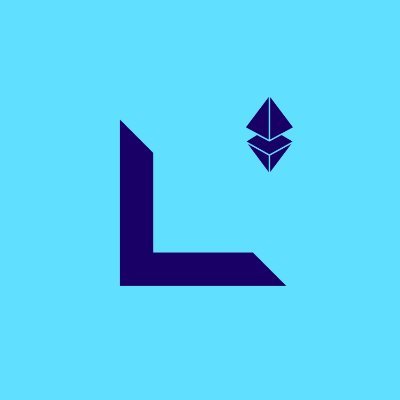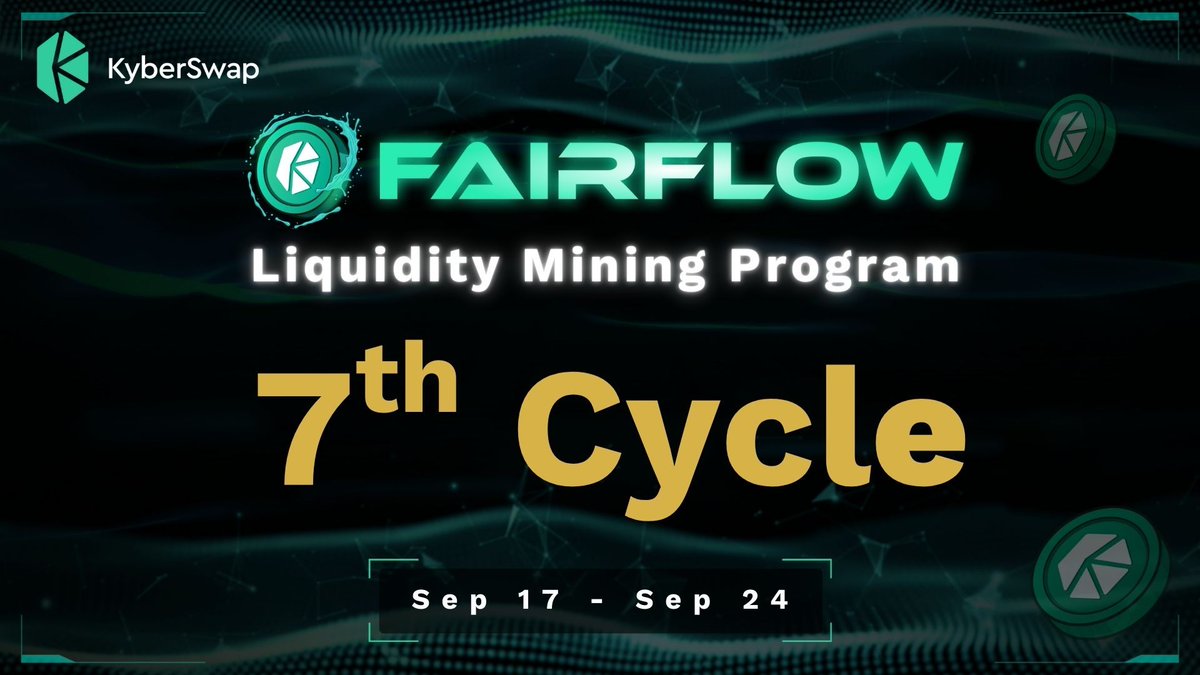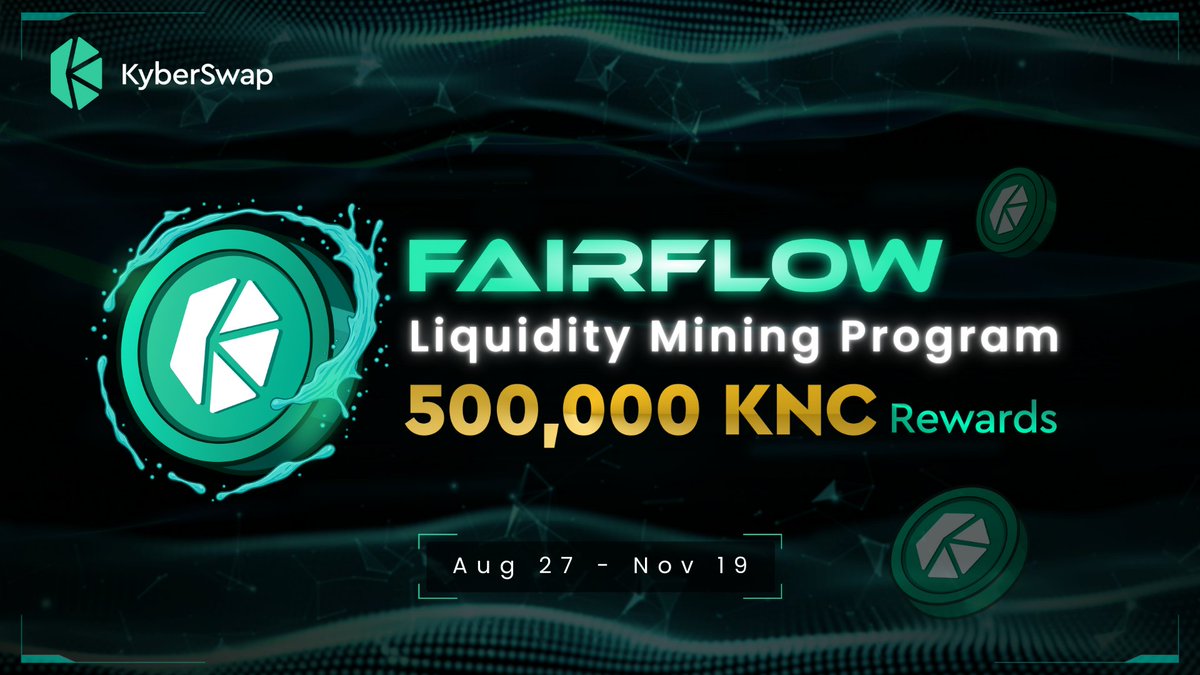Kyber Network-koers
in USD

Over Kyber Network
Disclaimer
OKX geeft geen beleggings- of vermogensadvies. Je moet zorgvuldig overwegen of het verhandelen of bezitten van digitale bezittingen voor jou geschikt is in het licht van je financiële toestand. Raadpleeg je juridische, fiscale of beleggingsadviseur als je vragen hebt over je specifieke situatie. Raadpleeg voor meer informatie onze Gebruiksvoorwaarden en Risicowaarschuwing. Door gebruik te maken van de website van derden ('TPW'), ga je ermee akkoord dat elk gebruik van de TPW onderworpen is aan en beheerst wordt door de voorwaarden van de TPW. Tenzij uitdrukkelijk schriftelijk vermeld, zijn OKX en haar partners ("OKX") op geen enkele manier verbonden met de eigenaar van de exploitant van de TPW. Je gaat ermee akkoord dat OKX niet verantwoordelijk of aansprakelijk is voor verlies, schade en andere gevolgen die voortvloeien uit jouw gebruik van de TPW. Houd er rekening mee dat het gebruik van een TPW kan leiden tot verlies of vermindering van je bezittingen. Het product is mogelijk niet in alle rechtsgebieden beschikbaar.
Prijsprestaties van Kyber Network
Kyber Network op sociale media





Handleidingen

Maak een gratis OKX-account aan.
Stort geld op je account.
Kies je crypto.
Kyber Network Veelgestelde vragen
Kyber Network biedt meerdere doeleinden aan in de gedecentraliseerde financiële ruimte (DeFi). Het werkt als een DeFi-aggregator, waardoor gebruikers toegang kunnen krijgen tot liquiditeit van verschillende bronnen. Daarnaast werkt het als een on-chain netwerk van liquiditeitsprotocollen, waardoor de ontwikkeling van DeFi-applicaties en gedecentraliseerde beurzen (DEX's) wordt ondersteund. Met zijn mogelijkheden is Kyber Network een essentiële rol om naadloze tokenswaps mogelijk te maken en de groei van het DeFi-ecosysteem te ondersteunen.
De voordelen van het Kyber Network zijn onder meer snelle tokentransacties en swaps voor individuele handelaren via de populaire DEX, KyberSwap.com. Daarnaast kunnen verkopers het ecosysteem hefboomwerking geven om te bouwengedecentraliseerde applicaties (Dapps)en DeFi-producten, waardoor toegang kan worden verkregen tot tal van liquiditeit voor gebruikers.
Eenvoudig KNC-tokens kopen op het OKX-cryptovalutaplatform. Beschikbare handelsparen in de OKX-spothandelsterminaal zijn onder meerKNC/USDT.
Je kunt KNC ook kopen met meer dan 99 lokale valuta door de "Snel kopen" optie. Andere populaire cryptotokens, zoalsBitcoin (BTC),Ethereum (ETH),Tether (USDT), enUSD Coin (USDC), zijn ook beschikbaar.
Je kunt ook je bestaande cryptovaluta swappen, waaronderXRP (XRP),Cardano (ADA),Solana (SOL), enChainlink (LINK), voor KNC zonder vergoedingen en zonder prijsverschuiving door gebruik te maken vanOKX Convert.
Bezoek de om de geschatte realtime conversieprijzen tussen lokale valuta's, zoals de USD, EUR, GBP en anderen, in KNC te bekijkenRekenmachine voor OKX cryptoconverteerder. De crypto-uitwisseling met hoge liquiditeit van OKX zorgt voor de beste prijzen voor je crypto-aankopen.
Duik dieper in Kyber Network
Kyber Network (KNC) je protokol likvidity postavený na síti Ethereum, který umožňuje bezproblémovou výměnu tokenů. Prostřednictvím podpory API usnadňuje Kyber Network integraci s různými decentralizovanými aplikacemi (DApps) a umožňuje uživatelům obchodovat a vyměňovat tokeny přímo z jejich peněženek.
Protokol zajišťuje bezpečnou a decentralizovanou víceřetězcovou likviditu a podporuje vývoj aplikací, jako jsou decentralizované finanční platformy (DeFi) a decentralizované burzy (DEX). Síť Kyber Network upřednostňuje rychlost a cenovou dostupnost, aby poskytovala efektivní a dostupné zkušenosti s obchodováním s tokeny.
Co je Kyber Network?
Kyber Network je agregátor likvidity a multihubová síť protokolů likvidity zaměřená na zjednodušení a zvýšení dostupnosti DeFi. KNC, známý také jako Kyber Network Crystal, je nativní token ekosystému Kyber Network. V rámci sítě slouží k několika účelům, včetně účasti na správě, distribuce odměn a plateb poplatků.
Tým Kyber Network
Tým sítě Kyber Network se skládá z různých osob, včetně Loi Luu, zakladatele sítě Kyber Network, Thong Trana, inženýra pro inteligentní smlouvy, a Quoc-Cuong Trana, výzkumného pracovníka společnosti DeFi. V týmu jsou i další významní členové, kteří přispívají k rozvoji a úspěchu projektu. Kromě toho Vitalik Buterin, spoluzakladatel Etherea, působí jako poradce projektu Kyber Network a poskytuje mu poradenství a odborné znalosti.
Jak Kyber Network funguje?
Kyber Network umožňuje rychlé obchodování s kryptoměnami tím, že konsoliduje více poskytovatelů likvidity a usnadňuje výměnu tokenů s vysokou likviditou. Poskytovatelé likvidity v rámci ekosystému jsou za poskytování likvidity odměňováni. Povaha odměn závisí na typu obchodu, který poskytovatel likvidity podporuje. Pokud je likvidita určena k podpoře obchodů s ETH na USDT, poskytovatel získává odměny za ETH.
Nejoblíbenějším produktem ekosystému je DEX KyberSwap.com. Tato platforma vám pomůže získat nejlepší sazby pro výměnu tokenů tím, že prověří více decentralizovaných burz. Kromě získávání likvidity z DEX se Kyber Network může pochlubit také KyberDAO pro prověřování návrhů, Elastic Protocol, který pomáhá s přístupem k přizpůsobeným poolům likvidity, platformou pro vývojáře, dynamickým tvůrcem trhu a funkcí "Discover" pro identifikaci trendových tokenů.
Nativní token sítě Kyber Network: KNC
KNC neboli Kyber Network Crystal je nativní ERC-20 důležitý pro ekosystém. Funguje jako řídicí i užitkový token a nabízí možnosti stakování. S pevným limitem nabídky 223,36 milionu tokenů mohou držitelé KNC své tokeny v rámci KyberDAO stakovat a podílet se tak na hlasování o konkrétních návrzích. Stakeři obdrží ETH jako odměnu za svou účast.
Případy použití KNC
Tokeny KNC mají v rámci ekosystému Kyber Network několik případů využití. Kromě své role jako tokenu pro správu a podpory stakování v rámci KyberDAO přispívají tokeny KNC k růstu sítě. Mohou se integrovat s platformami DeFi a poskytovat likviditu související s KNC na centralizovaných burzách (CEX) a DEX.
Jedním ze zajímavých případů využití tokenu KNC je jeho role ve struktuře poplatků sítě Kyber. Malý poplatek se platí vždy, když se pomocí sítě obchoduje s určitým párem tokenů. Tyto poplatky se používají k odkupu tokenů KNC z trhu. Nakoupené tokeny se pak spálí, čímž se vytvoří deflační efekt na nabídku tokenů. Proces odkupu a spalování se provádí prostřednictvím inteligentních smluv, což zajišťuje nedůvěryhodný a transparentní mechanismus.
Distribuce KNC
Počáteční plán distribuce tokenů KNC je nastíněn následovně:
- 34,48 % tokenů KNC je určeno pro soukromý prodej a rané investory projektu.
- Prostřednictvím veřejného prodeje bylo distribuováno 26,54 %.
- Pro tým je určeno 19,35 % tokenů. Všechny tyto tokeny jsou nyní odblokovány.
- 19,63 % je vyhrazeno pro vlastní rezervy společnosti Kyber Network.
Jak jedinečná je společnost Kyber Network?
Kyber Network vyniká jako likvidní síť tím, že od svého vzniku úspěšně podpořila více než 100 projektů. Její všestrannost se projevuje nasazením na různých blockchainech, včetně Binance (BNB), Polygon (MATIC), Fantom (FTM) a dalších. Tato široká integrace napříč různými řetězci přispívá k důvěryhodnosti, popularitě a přijetí sítě Kyber Network v rámci kryptografické komunity.
ESG-vermelding




